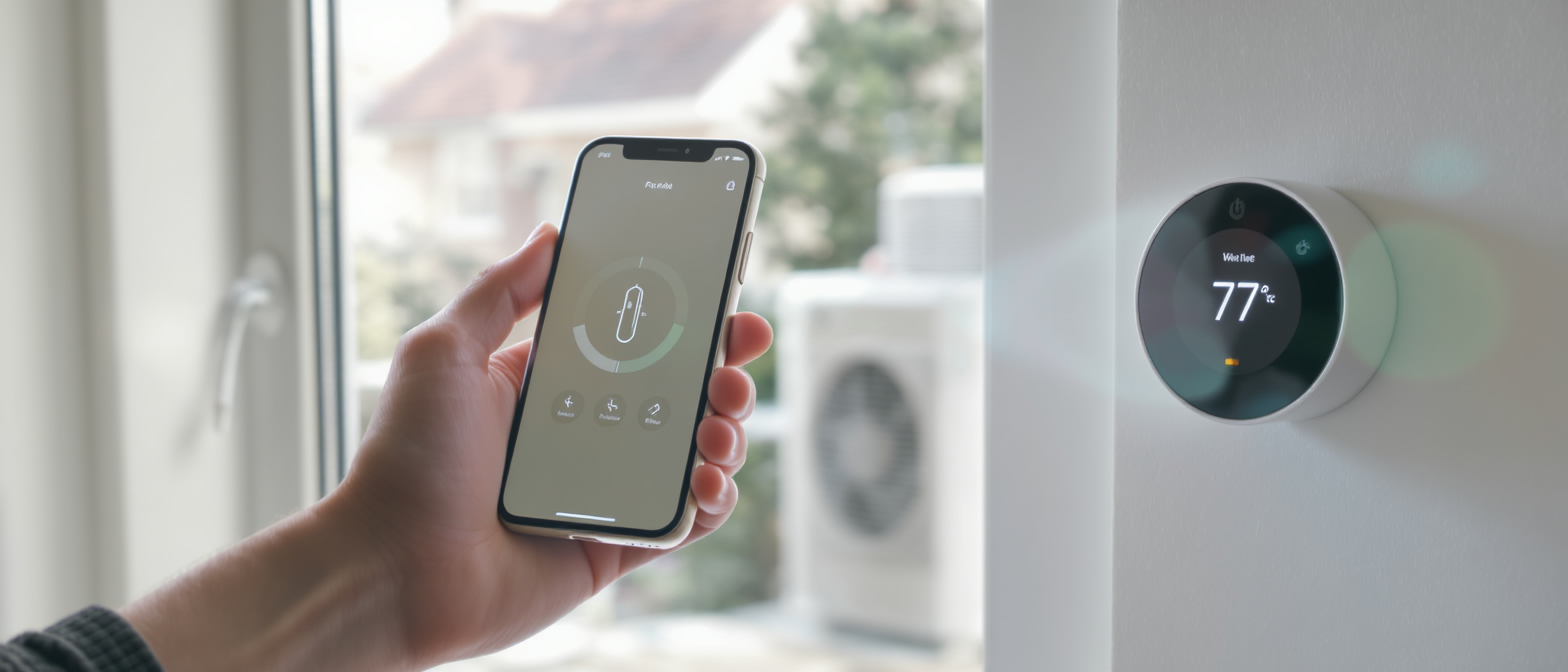Can I control my AC from my phone

Can I control my AC from my phone?
Yes—most homeowners and facility managers can control air conditioning from a phone today. The best path depends on your system: central air conditioning or a heat pump typically uses a smart thermostat, while ductless mini-splits, multi-zone systems, and many light commercial setups use a Wi‑Fi module or a smart AC controller. Below, we explain your options, what features you can expect in a mobile app, how to avoid common pitfalls, and why some steps must be handled by a qualified HVAC engineer for safety, code, and insurance reasons.
Central AC and heat pumps: use a smart thermostat
For most 24V systems (furnace + AC, straight cool, or heat pump), a smart thermostat is the cleanest way to enable phone control.
- Compatibility: Confirm your equipment type (single-stage, multi-stage, or variable-speed heat pump) and whether you have a common wire. Not all 24V thermostat terminals are wired the same in older homes.
- Features: Scheduling, geofencing, energy monitoring, and remote alerts are widely available. Some thermostats support zoning panels and dual-fuel logic.
- Cautions: Wrong wiring can short transformers, damage control boards, or disable safeties. Manufacturers may deny warranty claims if non-compliant wiring caused a failure, and insurers can require a licensed contractor for code-related work.
Ductless mini-splits and VRF: Wi‑Fi modules or smart controllers
Mini-split and VRF/VRV systems rarely use a standard 24V thermostat. Instead, phone control usually comes from:
- Manufacturer Wi‑Fi modules plus a mobile app. These plug into the indoor unit and offer direct features like modes, fan speed, swing, and error codes.
- Universal smart AC controllers (IR blasters) that emulate the handheld remote. These are flexible but depend on line-of-sight and proper model profiles.
- Commercial gateways for VRF that integrate with building platforms. These should be set up by qualified technicians to maintain network and equipment integrity.
What you can do from your phone
- Set schedules and scenes for comfort and savings.
- Use geofencing to reduce runtime when you leave and pre-cool before you return.
- View energy monitoring insights and runtime trends.
- Adjust zoning, humidity targets, and fan-only ventilation where supported.
- Connect to a smart home app or voice assistants for automations.
Network tips for reliable control
- Most Wi‑Fi AC controllers and thermostats prefer 2.4 GHz. If your router merges SSIDs, consider splitting bands during setup.
- Reserve DHCP addresses for thermostats and controllers to reduce drop-offs.
- Keep firmware and mobile apps updated for security and bug fixes.
- Use strong passwords and WPA2/WPA3. Avoid exposing equipment to the open internet; rely on trusted cloud services or a secure network.
Safety, code, and insurance realities
Phone control is easy; making it safe and compliant is not always DIY. Some tasks—like running new thermostat cable, adding a C-wire, working near high-voltage air handlers, or modifying condensate safeties—can be hazardous and may affect coverage.
- Electrical and controls: 24V thermostat circuits can still damage boards if miswired. Line-voltage mini-split connections require proper disconnects and torque specs.
- Refrigerant: Any refrigerant handling requires EPA Section 608 certification.
- Permits and code: Jurisdictions often require permits for new equipment, some controls, and added circuits. Insurance carriers and HOAs can ask for proof of code-compliant work by a licensed contractor.
- Water and fire risks: Skipped float switches or misrouted condensate drains can cause leaks and property damage; incorrect wiring can cause overheating.
When a site visit is essential
- Variable-speed systems, multi-stage heat pumps, dual fuel, and zoning panels.
- Legacy equipment with proprietary controls.
- VRF networks and commercial controls that interface with BMS.
- Large homes or mixed-use buildings where Wi‑Fi signal planning or dedicated gateways are needed.
Healthy air matters
Comfort is more than temperature. Indoor air quality (IAQ) improves when ventilation, filtration, and humidity are managed correctly. Many phone apps surface data from IAQ sensors, let you run fan-only ventilation cycles, and coordinate dehumidification. Our mission is simple: healthy air in the home for a healthy life.
About #1 AC Guys
#1 AC Guys is a fourth-generation family HVAC engineering team with 80+ years of experience in engineering. We serve Los Angeles County and nearby areas, including Orange County, Ventura County, and Western Riverside County. Cities we commonly reach include Los Angeles, Pasadena, Glendale, Burbank, Santa Monica, Long Beach, Anaheim, Irvine, Santa Ana, Newport Beach, Fullerton, Ventura, Oxnard, Thousand Oaks, Camarillo, Riverside, and Corona.
Our engineers have trained at manufacturer facilities of Fujitsu (Japan), Mitsubishi Elektrik (Thailand), Midea (China), Gree (China), and Haier (China). We handle residential and commercial projects, especially large or complex systems—mini-splits, central air, heat pumps, and VRF.
Quick steps to get started
- Identify your system: central AC, heat pump, mini-split, or VRF.
- Choose a path: smart thermostat (24V) or Wi‑Fi AC controller/OEM module.
- Confirm compatibility for stages, variable-speed, and zoning.
- Plan your network: 2.4 GHz access, stable Wi‑Fi, and app accounts.
- Enable features: schedules, geofencing, and energy monitoring.
- Have a qualified HVAC engineer review wiring, safeties (like a condensate safety switch), and code requirements. Many insurers expect licensed professionals for this scope of work.
Bottom line: controlling AC from your phone is absolutely possible. With the right hardware, careful setup, and professional verification where needed, you gain comfort, efficiency, and reliability—without risking equipment, warranties, or insurance coverage.
Yasmine is currently an Associate Professor of Psychology at Mount Saint Mary College where she teaches a wide array of courses in the Psychology department. She is a Fulbright Scholar spent a year working at the Medical Decision Making Center at Ono Academic College in Israel.
Yet, as many higher education professionals can surely attest to, I have also witnessed the other challenge in group decision making. In academia, engaging in critical dissent is encouraged (reviewed by Jetten & Hornsey, 2014), and while this is a fine attribute, practically,
